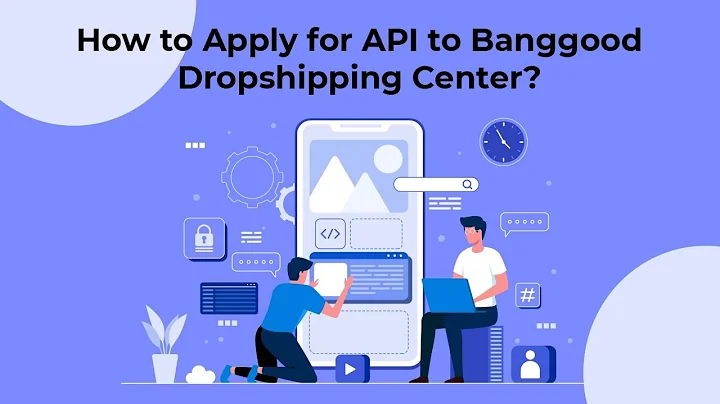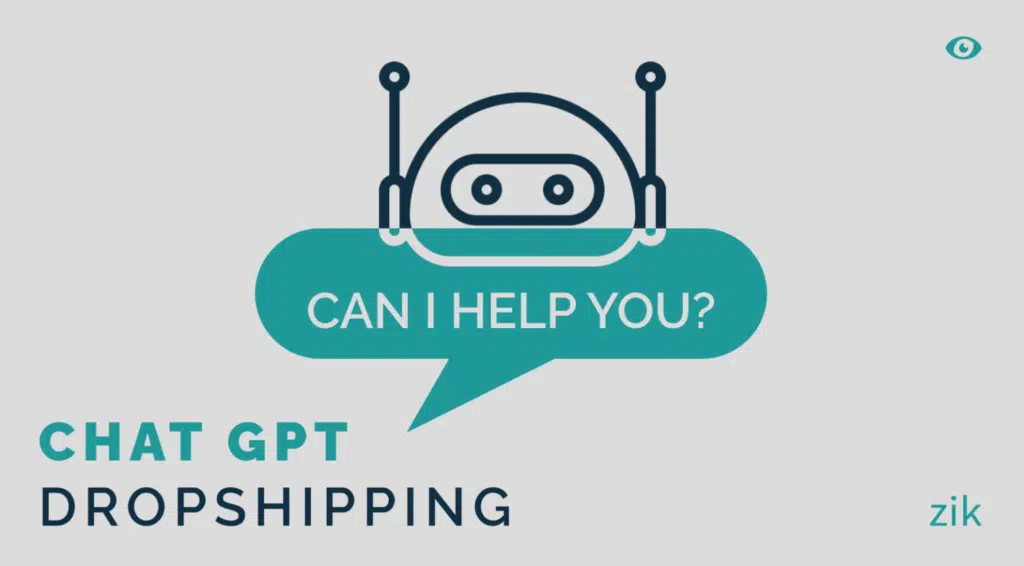
Artificial intelligence is reshaping the global e-commerce industry faster than any previous technology wave. From automated customer support to real-time product research to personalized marketing, AI-driven tools have become essential for staying competitive—especially in the fast-moving world of dropshipping.
Among all AI tools available today, ChatGPT stands out for its ability to analyze data, generate content, automate workflows, and enhance decision-making. For dropshippers operating on slim margins and tight schedules, ChatGPT can become a powerful virtual team member that works 24/7 without getting tired or making emotional decisions.
This comprehensive guide breaks down how ChatGPT can optimize every stage of your dropshipping business, whether you’re a beginner or an experienced store owner. By the end, you’ll understand exactly how to integrate AI into your workflow to reduce costs, increase efficiency, and scale your business faster than ever.
1. Why AI Matters in Modern Dropshipping
Dropshipping is no longer the “easy money” opportunity it used to be. Competition is higher, ad costs are rising, and customers expect faster service than ever. To succeed, you must:
-
Move quickly
-
Analyze data accurately
-
Create large amounts of high-quality content
-
Test products efficiently
-
Optimize ads continuously
AI gives you an advantage in all these areas.
1.1 Faster Decision-Making
AI processes data instantly, allowing dropshippers to respond to market changes before competitors even notice them.
1.2 Lower Operational Costs
AI can replace or support human labor in areas like content writing, customer service, product research, and ad optimization.
1.3 Better Conversions
AI-powered copywriting, personalized emails, and optimized product descriptions significantly boost conversion rates.
1.4 24/7 Availability
Unlike freelancers or staff, ChatGPT is always available—perfect for a global e-commerce business.
2. Using ChatGPT for Product Research
Product research determines whether you succeed or fail in dropshipping. ChatGPT can dramatically improve your research workflow.
2.1 Identify Winning Products Faster
You can ask ChatGPT to:
-
Analyze trends from TikTok, Instagram, Amazon, and Pinterest
-
Identify niche markets
-
Filter products based on profit margins
-
Suggest viral-ready items
-
Compare seasonal vs evergreen opportunities
Example prompt:
“Give me 15 trending home-improvement products suitable for dropshipping in Q4 with at least a 3× profit margin and high TikTok virality potential.”
ChatGPT can generate detailed product lists with reasons why each item has potential.
2.2 Competitor Analysis
AI can analyze:
-
Competitor pricing
-
Unique selling points
-
Marketing angles
-
Shopify store weaknesses
-
Social media engagement
-
Potential gaps in the market
Example:
“Analyze this competitor’s Shopify store and provide opportunities they’re missing for upsells.”
2.3 Product Validation Support
Before investing ad money, ChatGPT can help you:
-
Forecast demand
-
Evaluate seasonality
-
Predict potential ad hooks
-
Identify customer pain points
-
Recommend ideal targeting audiences
It gives you confidence before testing.
3. ChatGPT for High-Converting Product Descriptions
Product descriptions directly impact sales. Many dropshippers either copy supplier descriptions or write low-effort content—both hurt conversions and SEO.
ChatGPT helps you create descriptions that are:
-
SEO-optimized
-
Benefit-focused
-
Emotionally persuasive
-
Easy to read
-
Unique
3.1 Create Different Length Descriptions
Whether you need:
-
A short 100-word description
-
A long-form sales page
-
A bullet list of benefits
-
A conversational landing page copy
ChatGPT can generate it instantly.
3.2 Conversion-Driven Copywriting Frameworks
ChatGPT can write using frameworks like:
-
AIDA
-
PAS
-
Before–After–Bridge
-
4 Ps (Promise, Picture, Proof, Push)
These frameworks are proven to boost conversions.
3.3 Create SEO Titles & Keywords
Ask ChatGPT to:
-
Generate 20 SEO-optimized product titles
-
Provide long-tail keywords
-
Suggest Google-friendly meta descriptions
-
Optimize alt text for images
This dramatically boosts organic traffic.
4. ChatGPT for Facebook Ads Optimization
Facebook Ads are the backbone of most dropshipping stores—but they’re expensive. ChatGPT can lower your testing costs and improve results.
4.1 Create High-Performing Ad Creatives
ChatGPT can produce:
-
Scroll-stopping headlines
-
Engaging primary text
-
CTA variations
-
Benefit-focused angles
-
Emotional hooks
-
Product-pain-solution messaging
Example prompt:
“Write 10 Facebook ad headlines for a pet hair vacuum targeting frustrated cat owners.”
4.2 Analyze Ad Results
Provide your ad metrics, and ChatGPT can:
-
Identify why an ad underperformed
-
Suggest new audiences
-
Recommend creative angles
-
Highlight bottlenecks in CPC, CPATC, ROAS
-
Suggest testing roadmaps
For non-analytical entrepreneurs, this is game-changing.
4.3 Create Retargeting Scripts & Offers
ChatGPT can generate:
-
Retargeting ad copies
-
Scarcity-driven offers
-
Abandoned cart messages
-
Email follow-ups
-
Discount angles
These increases repeat conversions without spending additional ad budget.
5. Customer Service Automation With ChatGPT
Customer service is time-consuming, but essential. With AI, you can automate up to 80% of your support workflow.
5.1 Create Auto-Response Templates
ChatGPT can generate:
-
Tracking update messages
-
Refund policy explanations
-
Delay apologies
-
Replacement confirmations
-
Upset customer calming scripts
You can then integrate these into Shopify, Zendesk, or Shopify Inbox.
5.2 Smart Response Bots
You can train ChatGPT with:
-
Your store policies
-
Your brand tone
-
Your product details
-
Shipping times
This results in consistent, accurate, and human-like support around the clock.
5.3 Multilingual Support
Want to sell globally?
ChatGPT can instantly:
-
Translate messages
-
Write culturally appropriate responses
-
Tailor communication style
This expands your market without hiring multilingual staff.
6. ChatGPT for Store Optimization & UX
Beyond product research and ads, ChatGPT can help refine your overall store experience.
6.1 Improve Your Homepage Copy
ChatGPT can:
-
Rewrite your hero banner text
-
Create trust-building content
-
Suggest value propositions
-
Create branded taglines
-
Reduce friction points
6.2 Optimize Navigation & Layout
AI can analyze screenshots of your store and suggest:
-
Better button placements
-
Clearer collection organization
-
Improved product page design
-
Higher-impact CTA sizing
-
Customer journey improvements
6.3 Create Upsells & Bundles
ChatGPT can help you:
-
Identify complementary products
-
Create irresistible bundle names
-
Draft upsell scripts
-
Optimize offer positioning
Increasing AOV is one of the easiest ways to increase profit.
7. ChatGPT for Email & SMS Marketing
Retention marketing is essential for long-term profits. ChatGPT can automate the entire process.
7.1 Automated Email Flows
ChatGPT can build:
-
Welcome sequences
-
Upsell flows
-
Abandoned checkout emails
-
Holiday campaigns
-
VIP customer offers
-
Win-back campaigns
And you can plug these directly into Klaviyo or Mailchimp.
7.2 Personalization Based on Customer Behavior
Provide ChatGPT with customer segments, and it can create:
-
Personalized subject lines
-
Tailored offers
-
Dynamic product recommendations
This increases open rates, click-throughs, and repeat purchases.
7.3 SMS Copywriting
Short-form but high-impact messages:
-
Flash sale alerts
-
Shipping updates
-
Markdown notifications
-
Abandonment reminders
-
Loyalty rewards
AI ensures your tone stays consistent across all channels.
8. Workflow Automation: Integrating ChatGPT Into Your Daily Operations
Running a dropshipping business is chaotic. AI streamlines your workflow.
8.1 Automate Routine Tasks
ChatGPT can help with:
-
Daily reports
-
KPI monitoring
-
Supplier follow-ups
-
Inventory predictions
-
Customer FAQs
-
Product testing documentation
8.2 Create SOPs for Your Team
If you outsource or scale your team, ChatGPT can:
-
Write internal processes
-
Document workflows
-
Create training manuals
-
Draft job descriptions
-
Build onboarding guides
This eliminates confusion and improves large-scale consistency.
8.3 ChatGPT as a Virtual COO
For many entrepreneurs, ChatGPT acts like:
-
A strategist
-
A copywriter
-
A marketing assistant
-
A data analyst
-
A customer service lead
This significantly reduces your dependency on freelancers.
9. Real-World Dropshipping Examples Using ChatGPT
Here are real scenarios where ChatGPT dramatically improves results.
9.1 Product Testing Example
Without AI:
You test random products and burn $300.
With AI:
ChatGPT filters profitable niches, writes 10 ad angles, and predicts customer pain points—reducing wasted testing budget.
9.2 Facebook Ads Scaling Example
Without AI:
Your ad fatigue leads to declining ROAS.
With AI:
ChatGPT analyzes numbers and suggests:
-
New audiences
-
Angle variations
-
Fresh creatives
-
Funnel tweaks
ROAS rises from 1.2 to 2.5.
9.3 Customer Service Case
Without AI:
4 hours a day answering the same questions.
With AI:
90% of messages handled automatically.
Time saved: 80 hours/month.
10. The Future of AI in Dropshipping
AI will soon impact:
-
Automated video ad generation
-
Smart supply chain routing
-
AI-negotiated supplier pricing
-
Zero-touch customer support systems
-
Personal AI shopping assistants
-
Auto-generated Shopify store themes
Dropshippers who embrace AI early gain a permanent advantage.
Conclusion: ChatGPT Is the Ultimate Dropshipping Growth Multiplier
AI isn’t replacing entrepreneurs—it’s leveling the playing field, eliminating tedious work, and empowering small business owners to perform at an enterprise level.
ChatGPT can help you:
-
Find winning products
-
Optimize ads
-
Write high-converting content
-
Deliver better customer service
-
Improve store UX
-
Run automated email/SMS flows
-
Create SOPs
-
Scale efficiently
The dropshippers who embrace AI will grow faster, spend less, and outcompete those still relying on guesswork.


 8 min read
8 min read




